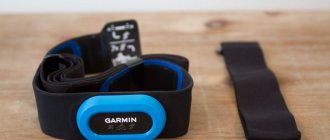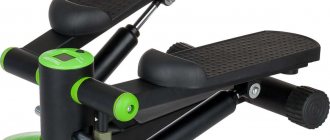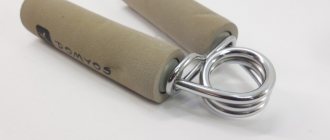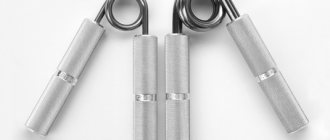There are a lot of running watches on the market now, but how do you choose from them? What to look for?
Proper running should be effective, safe and definitely enjoyable. Some people get this pleasure from the process itself, while others care about the results. To ensure that all three conditions are met, both will not be harmed by professional assistance in the form of a trainer or special devices designed specifically for athletes. So how do you choose a sports watch?
First, immediately look for a watch with a heart rate monitor or a heart rate monitor itself. Correct work with pulse zones is the key not only to a good result, but also to health and recovery.
Secondly, the choice depends on your experience, level of training and requirements. If you are just starting to run without a coach, a watch with training programs for distances from 5 km to a marathon will be a great help.
Third, think about where you most often run or plan to run, and estimate your GPS and map needs.
We advise you to choose from the products of three leaders in the sports watch market - Garmin, Polar and Suunto. Of course, there are Apple Watch and other popular devices, but it’s unlikely that their fans will need the advice from this article.
We have selected 9 models for you that will definitely help you at one or another stage of your running training. Study and choose.
Chest heart rate monitor Polar H10
Let's start with the main basic assistant - a chest heart rate monitor. Many companies today produce proprietary heart rate sensors, but Polar was the first to patent in 1979, and 3 years later introduced a wireless wearable heart rate monitor, so we recommend its devices.
Polar H10 is a worthy result of this 40-year expertise. The chest heart rate sensor is equipped with electrodes and changes the pulse according to the ECG principle, which ensures high accuracy of measurements. Polar H10 does not need to be charged: the battery is replaceable and is designed for 400 hours of training. The device supports Bluetooth Low Energy technologies and the Bluetooth Smart sensor can be synced with Polar devices and third-party applications so that data goes directly to them.
marathon and half marathon training plans and start training today!
Polar H10 comes standard with the Polar V800 smartwatch and provides the accuracy of an orthostatic test. The heart rate monitor is perfect for swimming, as it is protected from moisture at a depth of up to 30 meters and supports data transmission at a frequency of 5 kHz.
If the accuracy of heart rate measurement down to a percentage is important to you, then we recommend using the H10 - either paired with a watch or standalone. True, the memory is only enough for one training session, but synchronization is fast.
Read more about Polar H10.
SIGMA PC 15.11
The Sigma Sport PC 15.11 heart rate monitor is a waterproof design with a durable housing and a large display. The device displays the pulse at the time of measurement, as well as its average and maximum value. The heart rate range is set - upper and lower limits. The screen shows training time data and information about periods outside of training zones. If the pulse goes beyond their limits (lower or upper limit), an audible and visual signal appears. The percentage ratio of the current heart rate to the maximum is determined. There is a calorie consumption counter, number of laps (up to 50) and a training manager with one programmable zone. In addition, standard functions are included: stopwatch, clock, date and backlight.
Briefly about the product:
- Wearing location: wrist
- heart rate sensor: external
- moisture protection
- battery type: batteries
- lap counter, calorie monitoring, ability to manually set training zones, ability to calculate average heart rate, display of maximum heart rate during training, stopwatch, clock
pros
Large set of functions.
High measurement accuracy.
Defines individual training zones.
Can be used for running, walking, hiking.
Stylish design.
Minuses
Backlight time is too short.
Inconvenient strap.
View all prices
Shoulder heart rate monitor Polar OH1
A less traditional, but more convenient to wear format is the shoulder heart rate monitor. Polar OH1 is the first standalone heart rate sensor, which means that it can be either synchronized with a smartphone or used independently.
Unlike the H10 and other chest heart rate monitors, the OH1 uses an optical heart rate monitor rather than an ECG. Thanks to this, it became possible to mount the sensor almost anywhere and not constantly check the fit of the electrodes. This is especially true for girls: cardio tape under a sports bra or competition jersey can cause a lot of chafing.
On the downside, unlike its predecessor, OH1 does not support data transmission at a frequency of 5 kHz (Gymlink). But the internal memory of this sensor is 4 MB; this is enough for 200 training hours.
The Polar OH1 battery is rechargeable, one charge lasts for 12 hours. The sensor can be used in water. In general, a suitable option for those who like not only to run.
Read more about Polar OH1.
What is the difference between a heart rate monitor and a smart bracelet?
A heart rate monitor is a highly specialized device whose purpose is to measure heart rhythms. Whereas smart watches for sports have a wider range of applications. Even models with an integrated heart rate monitor provide greater error than a conventional heart rate monitor.
Therefore, to accurately determine your heartbeat, choose a heart rate monitor. And if you need a gadget with a long list of capabilities, buy a smart bracelet.
A heart rate monitor is one of the most popular devices in the sports industry. With the right choice, it will be a reliable assistant on the path to improving your results and developing endurance.
Smart watch Polar V800 H10
If you want a watch for serious running and an equally serious chest heart rate monitor, we recommend choosing the Polar V800, as it is a combination of a great watch and the H10, no compromises.
The watch is shock-resistant and the glass is scratch-resistant, perhaps even more so than the premium sapphire displays on top-end Garmins. Yes, the V800 is inferior to other models (and even the younger M430) in terms of black-and-white screen resolution, but this is compensated by an excellent viewing angle and battery life - the watch holds a charge for up to 30 days.
The device is ideal for triathletes. Firstly, the watch is not afraid of water (neither open water nor a swimming pool) and thanks to H10 it correctly displays your heart rate. Secondly, the firmware allows you to combine several sports in one training session, changing modes with the press of one button.
Thanks to the built-in altimeter, you can also determine the ascents and descents of the distance. The function of returning to the desired point is available, which is useful in everyday life.
In the Polar Flow app or its desktop version, you can find out the maximum pace, cadence and load level for each workout, as well as receive motivating information about the effect of the exercise. In addition, V800 owners have the opportunity to regularly conduct a Vo2max test and an orthostatic test.
Polar V800 is suitable for you if you engage in cyclic sports, especially running and triathlon, monitor your aerobic threshold, calculate RR intervals and conduct serious analytics of your training.
Learn more about Polar V800.
Heart Rate Zones
Why is it even necessary to measure your heart rate during exercise? Depending on your pulse or heart rate (abbreviated HR), your body will use different sources of energy. Based on this, there are several load zones that determine the effectiveness of your workout: The specified percentage is taken from the maximum heart rate value. To calculate it, we use the formula:
Maximum heart rate = 220 – age.
Accordingly, in order for the body to use fatty acids as a source, it is enough to keep the pulse in the zone of 60-70% of the maximum heart rate. For example, if your age is 30 years old, then the following calculations will be used to calculate the possible range of your heart rate:
- Lower threshold = (220-30)*0.6=114
- Upper threshold = (220-30)*0.7=133
With this heart rate (114-133 beats per minute), you can exercise for a long time, maintaining a continuous pace. In this case, the exercise will be aerobic, that is, using oxygen. Such cardio workouts help burn fat and train the heart. If you are doing high-intensity interval training (for example, training according to the Tabata protocol), then at the peak moments your heart rate should be in the anaerobic zone, i.e. 80-90% of maximum heart rate:
- Lower threshold = (220-30)*0.8=152
- Upper threshold = (220-30)*0.9=171
The heart rate monitor helps you monitor your heart rate and keep it in the zone that meets your requirements. If your heart rate monitor model allows it, you can set the heart rate zones you are interested in, and you will be notified when your heart rate leaves the specified zone.
Benefits of a heart rate monitor:
- A heart rate monitor protects your heart from overload during exercise because you monitor your heart rate.
- You will exercise in the heart rate zone you need - for fat burning or endurance, depending on your goals, and therefore train more effectively.
- With a heart rate monitor it is easy to track your progress, analyze the level of load and its perception by the body.
- You will know exactly how many calories you burned during your workout.
- You can use the heart rate monitor during your normal daily activities to assess your body's performance or monitor your stress levels.
- The heart rate monitor is indispensable when running or walking fast on the street, when there are no other sources for determining the level of load.
Many cardio machines already have a built-in heart rate monitor. But firstly, such heart rate monitors show inaccurate data, which is better not to rely on. Secondly, to record data you need to hold the handles while running or walking, which is not always convenient. Therefore, if you want to receive the most accurate data on heart rate and calories, it is better to purchase a heart rate monitor. You can also use manual heart rate monitoring. To do this, you need to stop and count the beats, recording the resulting values. However, additional manipulations during training are not always convenient, and the obtained values will have a strong error. In addition, constant stopping lowers your heart rate, which disrupts the rhythm of the activity. This is why a heart rate monitor is indispensable: it will record data instantly throughout the entire workout.
Sports watch Polar M430
Of course, it is best to combine the readings of a watch and a full-fledged heart rate monitor, but the benefits of a built-in wrist heart rate monitor are difficult to overestimate. If the V800 comes in conjunction with the H10, then in the case of the M430 let’s remember about the OH1.
The devices share the same optical heart rate monitor, the most accurate in its class and developed by Polar. Heart rate tracking occurs 24/7. The model weighs only 51 grams, and the charge lasts about 10 days using GPS for training 2-3 times a week.
The Polar Flow ecosystem supports about 100 sports profiles and contains training programs for races of 5, 10 km, half marathon or marathon, scheduled for every day for 2-3 months.
In the app, you can create your own training plan and track progress using analytics and Running Index and Polar OwnIndex - indicators that reflect aerobic running efficiency and maximum oxygen consumption (VO₂max), respectively.
Users have access to several GPS accuracy modes, interval training, as well as analytics of sleep duration and quality and planned recovery time after exercise.
The Polar M430 is a very functional, but affordable (especially compared to other models) watch that is tailored specifically for runners.
Read more about Polar M430.
Sanitas SPM22
Sanitas SPM22 heart rate monitor is designed for fitness and sports in your free time.
The chest sensor provides heart rate measurement that matches the accuracy of an ECG. Data transmission from the sensor is carried out in analog mode.
The device comes with three preset training zone options: “Health Promoting Zone,” “Fat Burning Zone,” and “Endurance Training Zone.”
You can set up your individual training zone. An acoustic signal will sound when you leave the training area.
In addition to heart rate monitoring, the heart rate monitor will show the average and maximum heart rate, the time spent within, below or above the training area. Calculate energy consumption in kcal, fat burning in grams.
For a more accurate calculation, there is a choice of three levels of physical activity.
The results of 25 laps can be recorded in the heart rate monitor's memory - the time taken and the average heart rate for all laps together or each lap separately.
The heart rate monitor is waterproof to a depth of 50 m. Can be used when swimming, but without transmitting heart rate values.
Briefly about the product:
- Wearing location: wrist
- heart rate sensor: external
- body material: stainless steel steel
- moisture protection
- battery type: batteries
- lap counter, calorie monitoring, calculating fat burned in grams, the ability to manually set training zones, saved training zones, the ability to calculate average heart rate, display the maximum heart rate during training, stopwatch, clock
pros
Low price.
Waterproof to a depth of 50 m.
Great functionality.
Record 25 lap times for each workout.
Minuses
Poor quality strap.
View all prices
Suunto Spartan Sport Wrist HR
Let's move on to another Finnish company - Suunto. It has been producing liquid compasses, dive computers and sports watches for over 80 years. Alas, the legendary Ambit 3 was discontinued, but Suunto Spartan was launched.
Suunto Spartan became the first line of the Finnish company with a color display, and Sport Wrist HR was the first model of this line with a built-in PerformTek optical heart rate sensor from the American Valencell. They weigh 72 g, the display is touch-sensitive, color and made of crystal glass
What can this watch do? Suunto has its own Movescount ecosystem, which offers more than 80 sport modes (including multisport and triathlon) and customizable displays. The watch supports interval training and provides post-workout information.
There is route and elevation navigation with GPS/GLONASS, a built-in accelerometer and FusedSpeed™ technology. In Sport Wrist HR training mode, it lasts up to 40 hours with energy saving.
Runners will benefit from tables with heart rate milestones, pace measurements, recovery projections, personal bests, and planning with a coach. Bonus for girls: in addition to colorful models, there is a very beautiful one - Gold, in white with gold edging. This watch can withstand 10 days in “time” mode and up to 12 hours with a working GPS module.
Read more about Suunto Spartan Sport Wrist HR.
Suunto Spartan Sport Wrist HR Baro
Suunto Spartan Sport Wrist HR Barо is the optimal model of the Finnish brand: it is equipped with both an optical heart rate monitor and a barometric altimeter. In terms of their dimensions, the Baro is absolutely identical to the Sport Wrist HR; they differ in design: there is a steel Stealth and an amber Amber. The model is almost indestructible: it can withstand immersion up to 100 m, and is protected from shock and damage.
Sport Wrist HR Barо will work for 10 hours in GPS tracking mode every second and 40 hours when accessing satellites every minute in energy-saving mode. The watch is charged using a magnetic docking station - very convenient.
The model is designed for outdoor sports and especially in the mountains, be it running or mountaineering. Thanks to the built-in barometer, Baro will warn the owner about weather changes and also tell the exact time of sunset and sunrise. Route navigation, POI (Points of Interest) and ETA functions will also be useful - navigation to selected points with calculation of time of arrival. We especially note the route heat maps in Suunto Movescount.
Read more about Suunto Spartan Sport Wrist HR Baro.
Beurer PM15
With the Beurer PM15 heart rate monitor you can monitor your heart rate without using a chest strap.
You simply touch the sensor on the front side of the device with your finger. Thanks to the measurement method from the finger sensor through the arm, upper torso, other arm to the sensor on the back of the heart rate monitor, within a few seconds you can determine the pulse rate, comparable in accuracy to an ECG.
The heart rate monitor is especially suitable for regular or Nordic walking, hiking, and also, if for some reason it is inconvenient to wear a chest strap.
The device's functions include a clock, stopwatch, alarm clock and countdown timer.
Heart rate limits for training are individually adjustable. An acoustic signal will sound when you leave the training area.
The heart rate monitor is waterproof to a depth of 50 m. Can be used when swimming, but without the ability to measure heart rate.
Briefly about the product:
- Wearing location: wrist
- Heart rate sensor: built-in
- moisture protection
- battery type: batteries
- possibility of manually setting training zones, stopwatch, clock
pros
Finger sensor for taking readings.
Setting up an individual training program.
Acoustic alarm when leaving the training area.
Heart rate measurement comparable in accuracy to ECG (HR).
Low price.
Minuses
Not the most stylish design.
View all prices
Suunto Spartan Trainer Wrist HR
Finally, the third model from Suunto is the lightest and smallest: its weight is 56-66 g and its thickness is 14.9 mm, so the Trainer looks good and fits even on narrow wrists. There is, of course, the other side of the coin: the watch has lost quite a lot of autonomy, and you have to charge it every other day.
Although Suunto is much inferior to Polar and Garmin models in terms of battery life, it is superior to them in display quality: the resolution is 300 x 320 versus, at best, 240 x 240. In addition, the Trainer model has more color options for every taste.
In terms of functionality, this version is almost no different from the Sport Wrist HR: the same 80 sports profiles, customizable displays for runners, full GPS navigation and tracking. Is that the depth of immersion has become smaller - and, in fact, the operating time. As a result, we have a slightly less “long-lasting”, but quite competitive model for less money.
Learn more about Suunto Spartan Trainer Wrist HR.
Garmin Forerunner 935 sports watch
Unlike Polar, Garmin has always specialized in working with GPS, which could not but affect the functionality of their devices. The Garmin Forerunner 935 is practically an on-board computer that can take weeks to learn. At the same time, the watch is light (49 g) and stylish, it looks good even under a suit.
Without recharging, the watch lasts up to 2 weeks, and charges in just an hour and a half. With continuously working GPS, they will last for as long as 24 hours, and in economy mode – up to 50 hours.
FR 935 are equipped with a Wi-Fi module and a barometric altimeter. The heart rate monitor is optical; heart rate is measured around the clock every 2 seconds, making it convenient to work with heart rate zones during training - the watch warns you when you leave the desired zone. The same data is used to calculate HRmax, HRR and recovery time.
Using analytics in Garmin Connect, you can find out your lactate threshold, recommended exercise level, functional power threshold, and even predict your results in competitions. There is an opportunity to work out with a virtual “partner” or compare results with real people, as well as a paid option for contacting a trainer.
A participant of the 2017 Moscow Marathon wrote in his review about how to use the Garmin Forerunner 935 to prepare for a marathon and during the distance.
There are a lot of possibilities for running - from customizing watch faces and widgets to measuring cadence and step frequency. You can even control your music on your phone!
Learn more about Garmin Forerunner 935.
Beurer PM62
The modern device watch-pulse tachometer Beurer PM62 allows you to measure your pulse, the accuracy of which corresponds to ECG indicators. Moreover, you can set the average and maximum heart rate and stop the “dangerous” workout in time.
Unlike analogues, this heart rate monitor, after crossing the permissible limit of a quantitative value, does not produce irritating sounds, but signals the end of training in color.
Users of the device will undoubtedly be pleased with the presence of a kilocalorie counter and a fat burning controller. A stylish design solution in the form of a wristwatch allows you to consider the Beurer PM62 heart rate monitor as a fashion accessory or gift.
The color indicator flashes green if the parameters are within the acceptable range, and red if they are outside it.
Briefly about the product:
- Wearing location: wrist
- heart rate sensor: external
- moisture protection
- battery type: batteries
- weight 45 g
- calorie monitoring, counting of burned fat in grams, the ability to manually set training zones, the ability to calculate average heart rate, display of maximum heart rate during training, stopwatch, clock
pros
Durable, damage-resistant housing.
Moisture resistant (withstands immersion to a depth of 30 m).
Analog sensor.
It has a PC interface, so data can be saved to a computer.
Universal design.
Minuses
The cost is quite high.
View all prices
Garmin Fenix 5 sports watch
If even the most advanced functionality is not enough for you, and finances allow it, then you should think about a premium watch - such as the Garmin Fenix 5 with a stainless steel case and sapphire crystal. They are like a luxury car: they can do a lot of things, are incredibly comfortable to use and will make the right impression on business partners.
We are, however, interested in their “professional” sports capabilities. This model differs little from the Forerunner 935 - except that the Fenix 5 has more functions for tourism. This Garmin model also supports ANT+ and allows you to connect third-party sensors. Both the Garmin Elevate optical heart rate monitor and GPS navigation work great.
Water resistance is 10 ATM, so you can swim and dive. As for autonomy, in Fenix 5 smartwatch mode there are 336 hours, with GPS always on - 24 hours, and in Ultratrack saving mode - 75.
If you train in the city, choose the basic model of Fenix 5, if in nature, then the support for topographic maps and the ability to plot a route on versions 5X and 5S will come in handy.
Learn more about Garmin Fenix 5.
Video
How to choose a fitness bracelet with a heart rate monitor?
- Pay attention to the material from which the device is made: aluminum, rubber, plastic, hypoallergenic silicone, polyurethane. The composition should not cause irritation or allergic reactions. The fitness bracelet is worn without taking it off throughout the day, so it is important that wearing it does not cause discomfort
- If you like bright designs, take a closer look at models that have interchangeable straps
- Duration of operation on a single charge or on a battery. There are models that work on a single charge from several days to several months. Devices that need to be charged every day are not the best choice for a heart rate monitor.
- The backlight function will be useful for those who are used to working out in the dark or at twilight
- Pay attention to the degree of protection from moisture if training takes place in cloudy times, or if you are swimming. Remember that during active exercises the athlete sweats a lot, so the device must be reliably protected from moisture penetration
- There are models of fitness bracelets that can be attached not only to the arm, but also to the chest. This option will be relevant for those who are forced to adhere to a strict dress code at work.
- Some models, synchronizing with the phone, inform about incoming calls. And the most technologically advanced devices even allow you to answer a call without taking out your phone
- Please note that there is a power saving mode
Popular brands of such devices are Xiaomi, Fitbit, Sony, Huawei, Polar. The price range varies depending on options, characteristics and brand - from 2,000 to 11,000 rubles.











